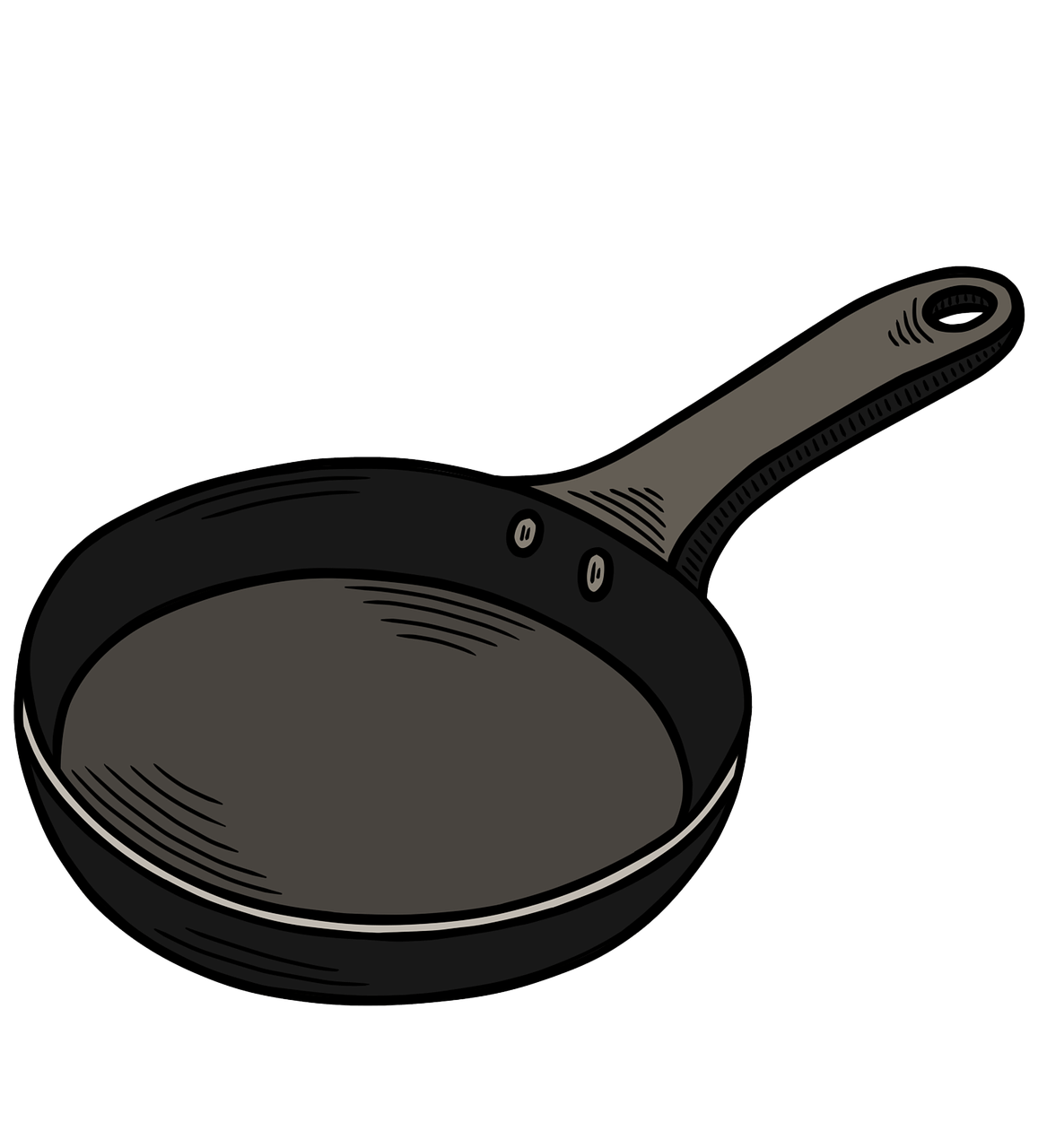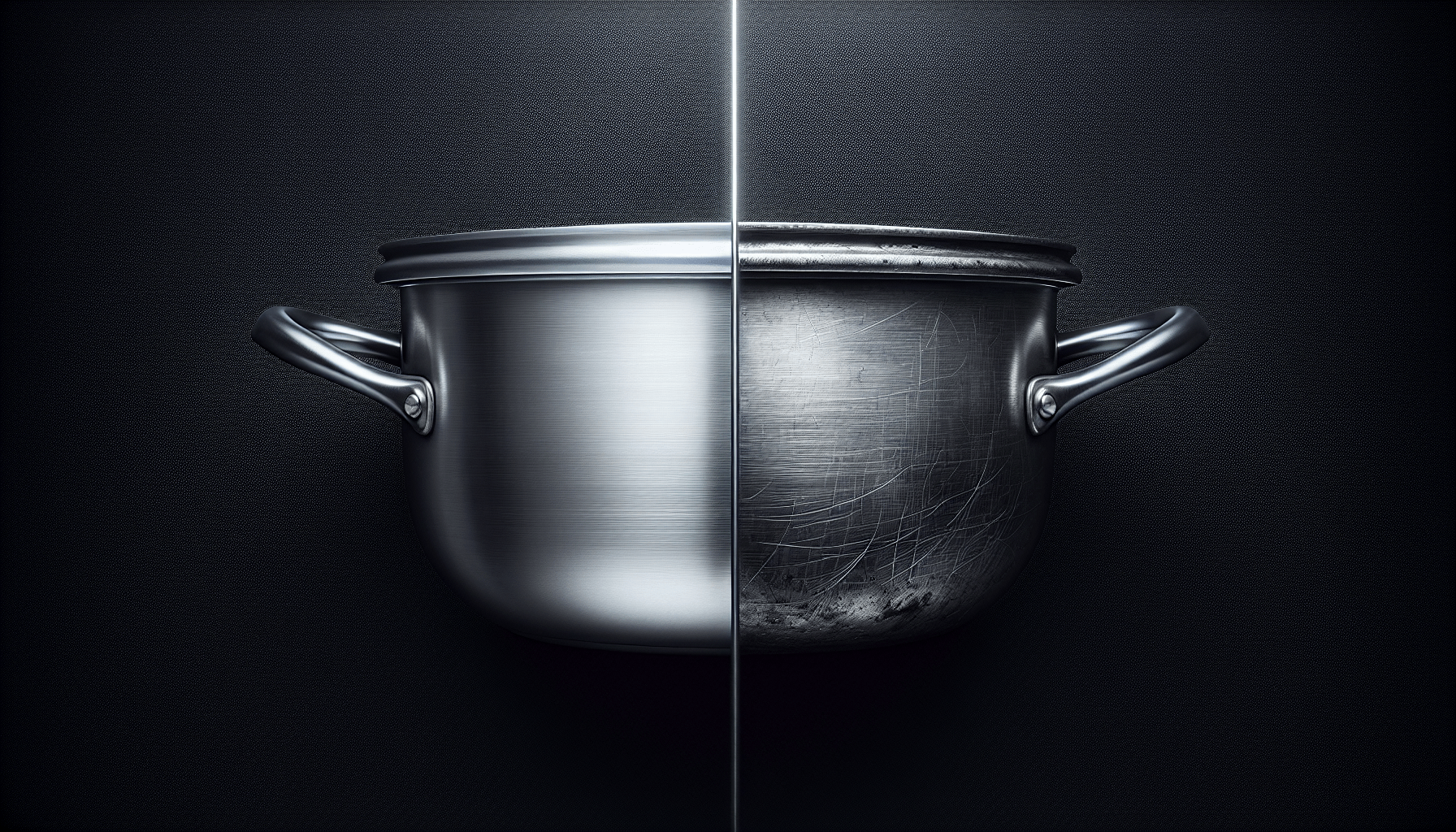In the world of cookware, aluminum reigns supreme for its exceptional heat conductivity and lightweight nature. However, when it comes to choosing between anodized aluminum and regular aluminum cookware, the decision can be a perplexing one. Anodized aluminum cookware is known for its durability and nonstick properties, while regular aluminum cookware is more affordable and widely available. So, what sets these two apart? Join us as we unravel the mystery and explore the key differences between anodized aluminum and regular aluminum cookware, helping you make an informed choice for your culinary adventures.
Some suggestions to consider!
Astercook 21 Pcs Pots and Pans Set Non Stick, Ceramic Cookware Set Detachable Handle, RV Kitchen Cooking Set Removable Handles, Oven Safe, Induction Ready, Stackable Non-stick Set, Pink
$99.99 (as of July 18, 2025 14:19 GMT +00:00 - More infoProduct prices and availability are accurate as of the date/time indicated and are subject to change. Any price and availability information displayed on [relevant Amazon Site(s), as applicable] at the time of purchase will apply to the purchase of this product.)CAROTE Nonstick Pots and Pans, Induction Cookware Set 16pcs Kitchen Cooking Sets, Pot and Pan Non Stick w/Frying pan (PFOS, PFOA Free)
$139.99 (as of July 18, 2025 14:07 GMT +00:00 - More infoProduct prices and availability are accurate as of the date/time indicated and are subject to change. Any price and availability information displayed on [relevant Amazon Site(s), as applicable] at the time of purchase will apply to the purchase of this product.)Caraway Nonstick Ceramic Cookware Set (12 Piece) Pots, Pans, Lids and Kitchen Storage - Non Toxic - Oven Safe & Compatible with All Stovetops - Cream
$445.00 (as of July 18, 2025 13:20 GMT +00:00 - More infoProduct prices and availability are accurate as of the date/time indicated and are subject to change. Any price and availability information displayed on [relevant Amazon Site(s), as applicable] at the time of purchase will apply to the purchase of this product.)

Definition of Anodized Aluminum and Regular Aluminum Cookware
Anodized Aluminum Cookware
Anodized aluminum cookware refers to pots, pans, and other cooking utensils made from aluminum that has undergone an electrochemical process called anodization. This process involves immersing the aluminum in an acid electrolyte bath and passing an electric current through it. Through this process, a layer of aluminum oxide is formed on the surface of the cookware, making it more durable and resistant to scratches and corrosion. Anodized aluminum cookware usually has a smooth and non-porous surface, which prevents the metal from leaching into food and makes it easier to clean.
Regular Aluminum Cookware
On the other hand, regular aluminum cookware is made from untreated aluminum. It is widely available and more affordable than anodized aluminum cookware. Regular aluminum cookware is known for its excellent heat conductivity, which allows for quick and even heating. However, it lacks the special protective layer found in anodized aluminum cookware, making it more susceptible to scratches and corrosion. The surface of regular aluminum cookware can react with certain types of food, leading to metallic taste and discoloration. Additionally, cleaning regular aluminum cookware requires more effort and can be challenging due to its porous nature.
Processing and Production
Anodized Aluminum Cookware
The process of anodizing aluminum cookware involves several steps. First, the aluminum is thoroughly cleaned to remove any impurities. Then, it is immersed in an acid electrolyte bath and connected to the positive terminal of a power source. The negative terminal is connected to an inert metal cathode. When the electric current passes through the acid bath, oxygen ions are attracted to the aluminum and combine with it, creating a layer of aluminum oxide on the surface. This layer is hard, durable, and resistant to scratching and corrosion. After anodizing, the cookware is sealed to further enhance its non-reactive properties.
Regular Aluminum Cookware
Regular aluminum cookware is produced using a simpler and more straightforward process. The raw aluminum is melted and poured into molds to create the desired shapes. The cookware is then cooled and undergoes various finishing processes, such as polishing or sanding. However, regular aluminum cookware lacks the additional step of anodization, resulting in a surface that is more prone to scratches and corrosion.
Durability
Anodized Aluminum Cookware
Anodized aluminum cookware is highly durable and long-lasting. The anodization process creates a hard layer of aluminum oxide on the surface, making it resistant to scratches, abrasions, and corrosion. The protective layer also helps the cookware withstand high heat without warping or distorting. Anodized aluminum cookware is less likely to chip or peel, ensuring that it remains intact even with regular use over an extended period. This durability makes anodized aluminum cookware a reliable investment that can withstand the rigors of everyday cooking.
Regular Aluminum Cookware
Regular aluminum cookware, while still relatively durable, is not as resistant to wear and tear as anodized aluminum cookware. Without the protective layer of aluminum oxide, regular aluminum cookware is more susceptible to scratches, dents, and corrosive reactions with certain ingredients. Over time, regular aluminum cookware may develop rough patches, discoloration, and signs of wear. It is important to handle regular aluminum cookware with care to prolong its lifespan and avoid damaging the surface.
Heat Conductivity
Anodized Aluminum Cookware
Anodized aluminum cookware offers excellent heat conductivity, allowing for quick and even heat distribution. The anodization process does not significantly affect the aluminum’s natural heat conductivity properties. This means that heat is efficiently transferred from the heat source to the food, resulting in consistent cooking results. With anodized aluminum cookware, you can expect to enjoy evenly cooked meals without hot spots or uneven browning.
Regular Aluminum Cookware
Regular aluminum cookware is renowned for its exceptional heat conductivity. Aluminum is highly responsive to heat, enabling it to heat up quickly and distribute heat evenly across the cooking surface. This rapid and uniform heat distribution ensures that food is cooked evenly and prevents hot spots. Regular aluminum cookware is particularly useful for achieving precise temperature control, making it suitable for delicate cooking techniques that require quick changes in heat.

Non-Reactive Properties
Anodized Aluminum Cookware
One of the key advantages of anodized aluminum cookware is its non-reactive properties. The anodization process creates a non-porous layer of aluminum oxide on the surface, preventing the metal from leaching into food. As a result, anodized aluminum cookware is safe to use with acidic ingredients, such as tomatoes or citrus fruits, as it will not react and alter the taste or color of the food. The non-reactive nature of anodized aluminum cookware also makes it suitable for preparing a wide range of dishes without compromising flavor or quality.
Regular Aluminum Cookware
In contrast, regular aluminum cookware is reactive and can interact with certain types of food, particularly those high in acidity. The aluminum ions can seep into the food, resulting in a metallic taste and discoloration. This reactivity can be problematic for individuals who are sensitive to changes in taste or for recipes where the flavor profile is crucial. Cooking highly acidic foods in regular aluminum cookware should be avoided to prevent any undesirable reactions and to ensure the integrity of the final dish.
Maintenance and Cleaning
Anodized Aluminum Cookware
Maintaining anodized aluminum cookware is relatively straightforward. The smooth and non-porous surface of the cookware makes it resistant to staining and easy to clean. In most cases, a gentle dish soap and warm water are sufficient for daily cleaning. Stubborn stains or food residues can be removed by soaking the cookware in a mixture of water and vinegar or using a non-abrasive cleaner. To preserve the anodized surface, it is recommended to avoid using harsh scrubbing pads or abrasive cleaning agents that can potentially damage or scratch the non-stick layer.
Regular Aluminum Cookware
Regular aluminum cookware requires more care and attention during cleaning. Due to its porous surface, food particles can easily become trapped, resulting in stubborn stains and odors. To clean regular aluminum cookware, it is advisable to avoid harsh abrasives and instead opt for mild dish soap and a soft sponge or cloth. For tougher stains, a mixture of water and baking soda or lemon juice can help to gently remove residue. It is important to dry regular aluminum cookware thoroughly after cleaning to prevent water spots or the formation of oxidized patches.

Cooking Performance
Anodized Aluminum Cookware
Anodized aluminum cookware offers excellent cooking performance due to its even heat distribution and non-reactive properties. The cookware heats up quickly and conducts heat evenly, eliminating hot spots and ensuring even cooking results. The non-reactive surface allows for the preparation of a variety of dishes without the risk of altering flavors or colors. Anodized aluminum cookware is particularly well-suited for browning, sautéing, and simmering, thanks to its reliable and consistent heat conduction.
Regular Aluminum Cookware
Regular aluminum cookware excels in heat responsiveness and heat conductivity, making it ideal for quick and precise cooking techniques. The rapid heat distribution allows for efficient cooking, especially when heat adjustments are needed. Regular aluminum cookware is widely used for tasks such as boiling, searing, and frying, where quick and uniform heat transfer is crucial. However, the reactive nature of regular aluminum cookware means that it may not be suitable for recipes that involve highly acidic ingredients.
Price Range
Anodized Aluminum Cookware
Anodized aluminum cookware typically falls into the mid-range to high-end price category. The additional process of anodization adds to the production costs, making the cookware more expensive compared to regular aluminum. However, the durability, non-reactive properties, and even heat distribution offered by anodized aluminum cookware make it a worthwhile investment for many cooking enthusiasts. With proper care, anodized aluminum cookware can last for years, outweighing the initial cost.
Regular Aluminum Cookware
Regular aluminum cookware is generally more affordable than anodized aluminum cookware. Its widespread availability and lower production costs contribute to its budget-friendly price range. Regular aluminum cookware is an attractive option for those on a tighter budget, especially for individuals who do not require the added durability and non-reactive properties offered by anodized aluminum cookware. While regular aluminum cookware may not last as long as its anodized counterpart, it can still provide reliable cooking performance at a more accessible price point.

Types of Cookware Available
Anodized Aluminum Cookware
Anodized aluminum cookware is available in a variety of types and styles. From saucepans and frying pans to stockpots and baking sheets, there is a wide range of anodized aluminum cookware options to suit different cooking needs. The non-stick surface of anodized aluminum cookware makes it ideal for low-fat cooking, as it requires less oil or butter. Additionally, some anodized aluminum cookware may feature additional enhancements, such as stainless steel handles or glass lids, to provide added convenience and versatility in the kitchen.
Regular Aluminum Cookware
Regular aluminum cookware is also available in a diverse array of options. It encompasses everything from pots and pans to baking dishes and roasting pans. Regular aluminum cookware can come in various finishes, including polished, brushed, or anodized aluminum-look coatings. While regular aluminum cookware lacks the non-reactive and non-stick properties of anodized aluminum, it still offers excellent heat conductivity and remains a popular choice for professional chefs and home cooks alike.
Conclusion
In summary, anodized aluminum and regular aluminum cookware both have their own unique characteristics and advantages. Anodized aluminum cookware stands out for its durability, non-reactive properties, and even heat distribution. It requires less maintenance and offers superior resistance to scratches and corrosion. On the other hand, regular aluminum cookware excels in heat conductivity and is more budget-friendly. While it may require extra care during cleaning and is reactive to acidic ingredients, regular aluminum cookware remains a reliable option for those seeking quick and precise heat responsiveness.
Ultimately, the choice between anodized aluminum and regular aluminum cookware depends on individual preferences, cooking style, and budget. Consider your specific needs and prioritize the features that matter most to you. Whether you opt for the enhanced durability and non-reactive surface of anodized aluminum or the exceptional heat conductivity and affordability of regular aluminum, both types of cookware can contribute to enjoyable and successful culinary experiences.


















